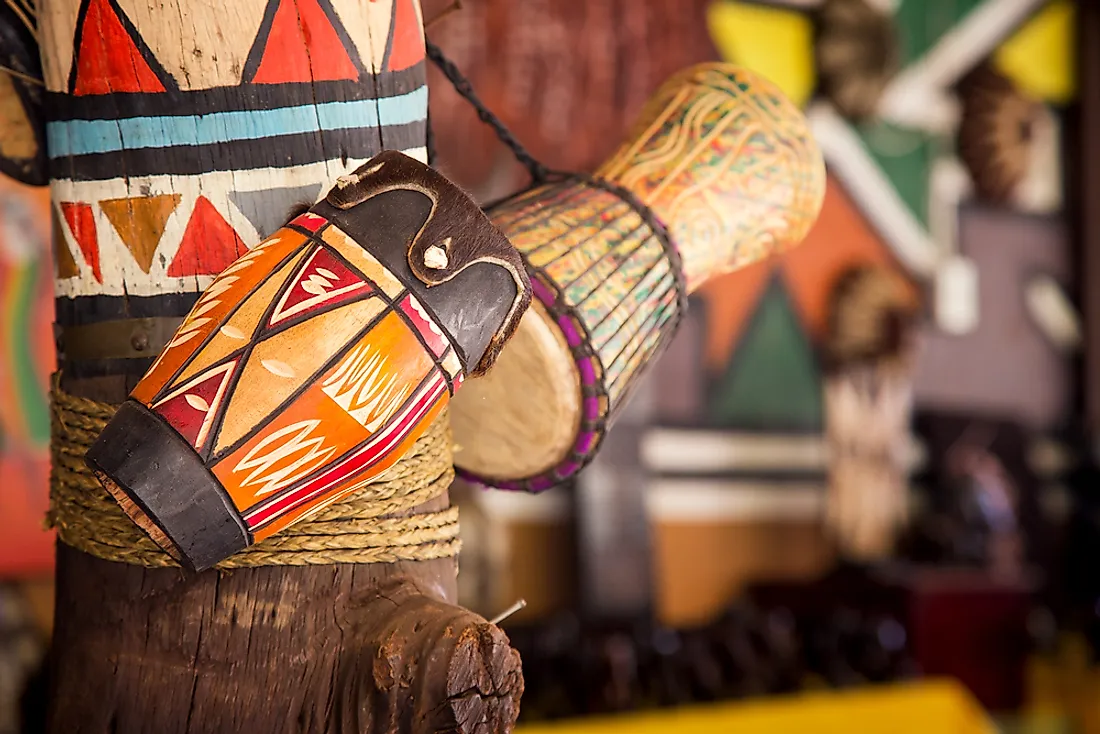South African Culture, Customs, and Traditions

The culture of South Africa is one of the most diverse in the world. The country boasts of an impressive eleven official languages and other several recognized languages, with each of the group having its own vibrancy and culture. A substantial majority of the South Africans still live in the rural areas where cultural traditions have survived. However, urbanization and adoption of new technology across the country have led to the decline in the traditional cultures. English and other foreign languages are slowly replacing the native languages.
South African culture is not homogeneous but is rather a collection of cultures with different cultures being predominant in different regions. Some of the prominent cultures of South Africa include the Khoikhoi and San culture, Zulu, Ndebele, Xhosa, and Sotho cultures among other cultures. These cultures blend beautifully to give the country its unique identity on the globe.
The People of South Africa
South Africa has a population of approximately 55 million people comprising of diverse culture, religion, origin, and languages. Africans or South Africans and Bantu-speaking people form the major part of the population (approximately 35 million). Some ethnic groups are unique to South Africa while others like Basotho crossed the border into the country. Some of the major ethnic South Africans include Zulu, Basotho, Venda, Xhosa, Tsonga, Khoikhoi, Ndebele, and San. South Africa also hosts a number of refugees and asylum seekers, especially from Zimbabwe, Democratic Republic of Congo, and Somalia. The majority of refugees live in major cities including Pretoria, Durban, Johannesburg, and Cape Town.
South African Languages
The population of South Africa is composed of people from different backgrounds, speaking different languages. Eleven languages are considered the country’s official languages. The first official languages were English and Dutch. The majority of South Africans can speak more than one language. The language spoken by the majority of the people, especially native South Africans is Zulu which is spoken by 23% of the population followed by Xhosa and Afrikaans at 16% and 14% respectively. Zulu is the language of the Zulu people who number 10 million. It is understood by 50% of the total population. The Zulu language became an official language in 1994. The Xhosa language is spoken by 8 million people as the first language and over 11 million as a second language. The majority of Xhosa speakers live in Eastern Cape Province. Afrikaans evolved from the Dutch language and has adopted some words from other languages such as German and Khoisan. English is the most popular second language of the South Africans and the most commonly spoken language in the country.
South African Tradition
South African tradition is not homogenous but a blend of different traditions and cultures practiced by different ethnic groups in the country. Here are some examples of traditions and cultures as practiced by major ethnic groups in the country.
Khoikhoi and San
Khoikhoi and San were the original inhabitants of present-day South Africa. The KhoiSan were known as the “Bushmen” and were skilled hunters and trackers. Their tracking skills are still necessary for the fight against poachers. They are mainly nomads who live in desert regions of South Africa
Zulus
The Zulus are known for their shield-bearing warriors under the leadership of Shaka. They are also famous for their beadworks, grass huts, and basketry. The belief of the Zulu people is based on ancestral spirits which appear mainly in dreams and a supreme being who is rarely involved in the activities of the mortal. Use of magic is common among the Zulus and any tragedy or illness is blamed on the evil spirit.
Xhosa
Xhosa culture is popular for the complex dressing that portrays a person’s social status, position in the society, and whether they are married or not. They also have a strong oral tradition with stories of ancestral heroes. Ancestral worship is a common practice and young men have to undergo a rite of passage. Stick fighting is a common sport among the Xhosa among the young men looking after the cattle. Women mainly tend the crops and look after the home.
Ndebele
Ndebele are known for the skilled women who decorate their houses in beautiful geometric designs. The skills are hereditary and women are tasked with the responsibility of teaching their daughters. The shapes used in the decoration are inspired by their fashioned beadwork. Ndebele women are distinguished from other South African women by the neck rings and the striking traditional blankets.
Sotho
The culture of the Sotho people differs from those of the Ndebele, Xhosa, and Zulus in several ways, especially on how they organize their villages. The Sotho homes are organized into villages rather than scattered settlements. The villages are further organized into age-sets. Each of the age-set is given a specific responsibility and the age-set graduate from one responsibility to another. They also allow their sons to marry from their kin, especially from the maternal side. Their traditional folk art includes pottery making, beadwork, decoration of houses, and weaving.
Venda
The Venda culture and tradition is built on mythical beliefs and water. They believe that lakes and rivers are sacred and that rains are controlled by Python God. Lake Fundudzi is one of the sacred places among the Venda and hosts the annual rites. Traditional healers known as Sangoma are believed to have access to the spirits and ancestors. Venda’s art has also been influenced by the belief in the spirit world. Cattle are considered a sign of wealth while agriculture is the main economic activity.
Modern Day South African Tradition
The younger generation from the above cultures is relocating to the city in search of a “better” life. However, in the city, they tend to abandon their traditions and culture for the western culture and lifestyle. Over time, a unique culture that combines the western culture and the traditional cultures have been developed. This new culture is evident in art, music, and food











